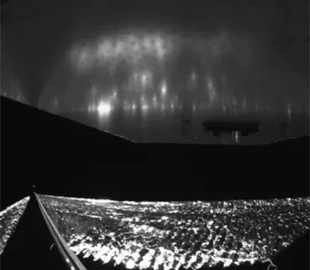
NASA's mission to advance solar sail technology with the Advanced Composite Solar Sail System has shown promising signs, despite minor complications. The team is focused on gathering data to enable future solar sail missions and optimize the spacecraft's performance.
NASA mission operators continue to study the performance of the Advanced Composite Solar Sail System and characterize the performance of its composite booms. After successfully deploying the booms and solar sail, the Advanced Composite Solar Sail System is still moving slowly in orbit as the spacecraft's orientation control system has not yet been re-engaged.
During the deployment phase, the team turned off the orientation control system to account for the changes in the dynamics of the spacecraft during the deployment of the sail. The orientation control system is critical to maintaining the spacecraft's orientation, whether it's pointing an antenna at a ground station for communications or positioning the solar panels to face the Sun to charge a battery.
On-Orbit Structural Integrity Assessment
With the solar sail fully stretched to its square shape about half the size of a tennis court, the mission team is assessing what appears to be a slight bend in one of the four booms. This probably happened when the jibs and sails were pulled up on the spacecraft during deployment. The analysis suggests that the kink may have partially straightened out in the weeks following boom deployment while the spacecraft slowly rolled over.
200% Deposit Bonus up to €3,000 180% First Deposit Bonus up to $20,000The main purpose of the Advanced Composite Solar Sail System demonstration — to test the deployment of booms in space to inform future applications of composite boom technology for large-scale solar sails and other structures. The data collected during this flight test has already proven to be very valuable, and the demonstration will continue to produce important information to enable future solar sail missions.
The mission team anticipates that a slight bend in one of the four booms will not interfere with the Advanced Composite Solar Sail System's ability to maneuver during the technology demonstration.
Power Conservation and Mission Strategy
Mission operators are now working to reposition the spacecraft, keeping the Advanced Composite Solar Sail System in low-power mode until its solar panels are more favorably oriented toward direct sunlight. The team conserves the spacecraft's power for priority operations, such as two-way communication with flight control, until its orientation control system is reactivated.
When the orientation control system is reactivated, the spacecraft can aim more accurately its wideband radio antenna to the ground station as it passes overhead during short communication windows with the mission team. At this stage, the team will be able to collect even more data, calibrate the exact shape of the sail and prepare to begin their maneuvers.

